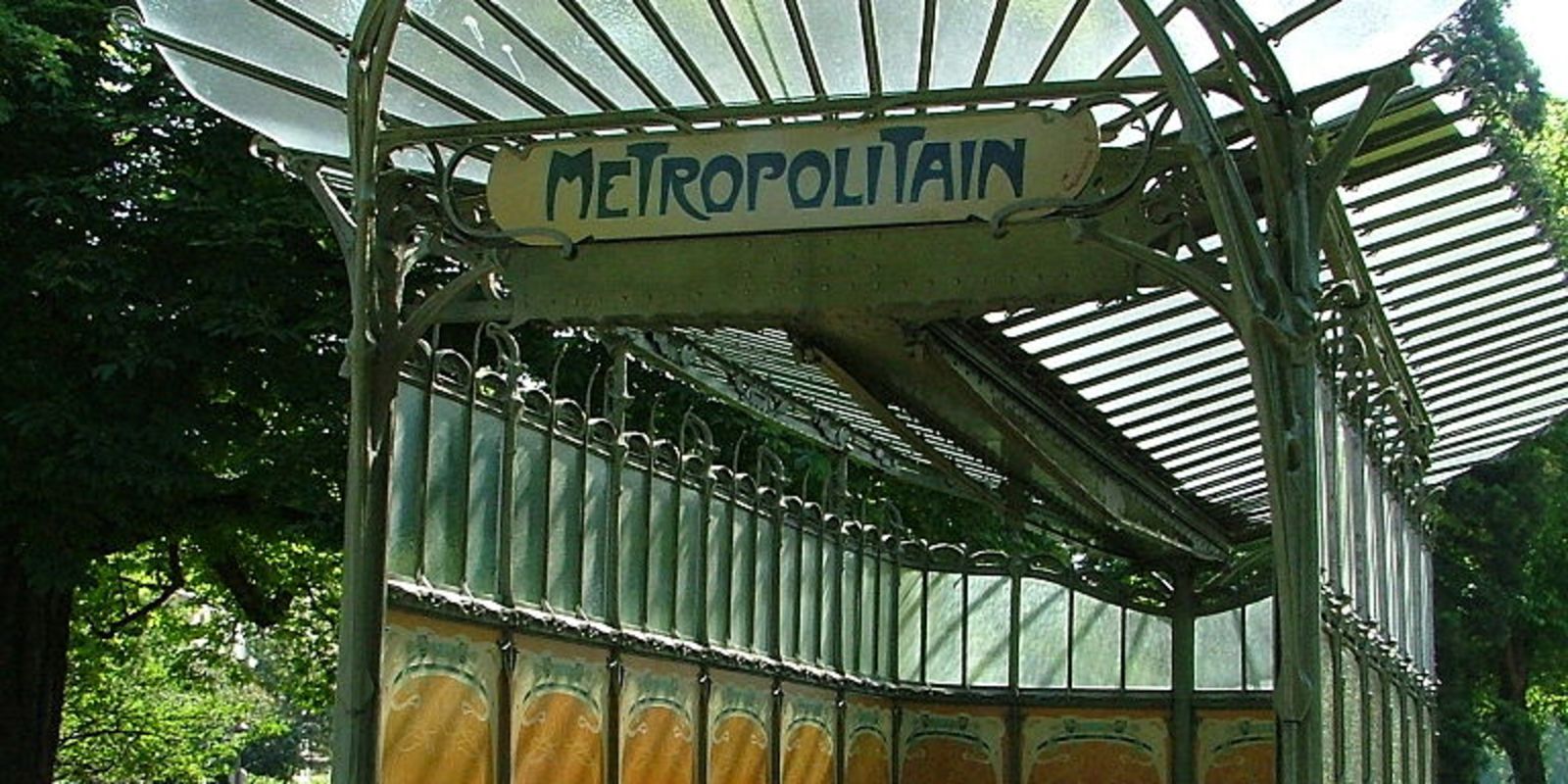Itinerary
Who said the 16th district was dull ? Embark on a quiet but eventful journey from La Muette to Foch avenue, in one of Paris high society’s favorite area of residence.

The 16th district is big – all the more considering that it includes the Bois de Boulogne – and is more varied than most think, provided you know where to look. To explore the area, we choose a rather obvious guiding principle : the XIXth century.
We’ll discover some architecturally remarkable works of that time, buildings of course but not only ! And we’ll visit the Marmottan Monet Museum to see some of the most famous paintings of the master of impressionism.
We’ll also chill out at the Ranelagh garden, and even walk along a small part of the old “Petite Ceinture” – former railways that now form a green belt at the edge of the city.
7 stops
1. Castel Béranger
This building may be the birth certificate of the style of Art Nouveau master Hector Guimard, the one who made some famous parisian subway stations entrances.
He was about 30-year old when build the Castel Béranger between 1895 and 1898, and he did almost everything there, including interior decoration.
The building was awarded at the first facades contest of the city of Paris in 1898, but its then unusual style was controversial, earning it the nickname “Castel dérangé” (“Deranged Castel”).
There are indeed some eccentricities to Guimard’s creation : the pink bricks, the typical finely wrought ironworks, and other little strange additions. Painter Paul Signac, who lived in one of the 6th floor’s art studios, used to call the building the “eccentric house” (using the english words).
2. Mallet-Stevens Street
Rarely a street name had been so appropriate : Robert Mallet-Stevens (1886-1945) has almost entirely build this little dead-end where 5 private mansions and a keeper’s house form one the major works of contemporary architecture.
Inaugurated in 1927, and initially intended to house artists, the lot is a skillfull arrangement of forms, such as cubes and cylinders, using terraces and other elements to make every apartment unique. Use of concrete and plate glass windows contribute to the sense of calm and relaxation that the architect intended to convey.
3. Marmottan Monet Museum
Located near the Ranelagh district, in the former hôtel particulier of art historian Paul Marmottan, who gifted both the place and his collections to the Academy of Fine Arts in 1932, the museum exhibits a large napoleonic collection, works of italian primitives, a collection of illuminations… And above all the biggest collection of impressionist master Claude Monet’s works in the world. The museum incidentally bears the master’s name.
The famous Impression soleil levant, the Pont japonais, Reflets sur la Tamise or the 1916 to 1919 Nymphéas are all here.
Other impressionist and post-impressionist masters are also present in the museum’s collections.
Source : translated from Wikipedia contributors, “Musée Marmottan Monet“
4. Ranelagh Garden
This english-style garden was created in 1960 by the Baron Haussmann, and arranged by engineer Jean-Charles Alphand.
It has a triangular shape, lots of statues and children areas. Despite the few crossing streets, it’s quite a nice relaxing place, mostly famous for its Puppet Theater.
Also available in the garden are pony and donkey rides and a carriage tour, and of course the merry-go-round horses with one of the only two (the other one being at the Luxembourg Garden) remaining genuine “jeu de bagues” (a game where children have to hold metal sticks and try to catch rings as they go by on their horses) in Paris.
5. Villa Beauséjour
This is not a house but a private dead-end, actually a miniature village made of 4 wooden isbas (traditional russian houses usually made of bricks and stones, and covered with wood) from the 1867 Universal Exposition. One of them is coming from Saint Petersburg and was carried over to Paris in spare parts.
Just push the railings (except on sunday, where the lot should be closed) to enter the Villa.
6. Passy’s Artesian Well
It’s the last artesian well in Paris that is still in use today. He was set up in 1861, but was renovated in 1994. You may be able to see some of the neighbourhood’s inhabitants coming over to fill their gallons with the well’s water.
This water, by the way, may have a ferruginous taste, for the well pipes are made of iron. Drawing this water from a depth of about 600 meters, the well was also originally intended to be used to irrigate the rivers and lakes of the nearby Bois de Boulogne. It is of course no longer the case, but says a lot about the scope of this well.
7. Porte-Dauphine Subway Station
Inaugurated on December 13, 1900, line 2 of the metro was then ending as close as Étoile station (now called Charles-de-Gaulle-Étoile).
One of the entrance of Porte-Dauphine station – the one at the Place des Généraux du Trentinian, on the even-numbered side of Foch avenue – is Art Nouveau master Hector Guimard’s work. Hence of its aerial shape, it was nicknamed “the dragonfly”.
CulturalLeisureFamily
Map, navigation, practical information, extra pictures and more are available on the Paris Parcours app.
